New Zealand - Island of Endemic's
Tuesday 30th Jan – Tuesday 20th Feb 2018
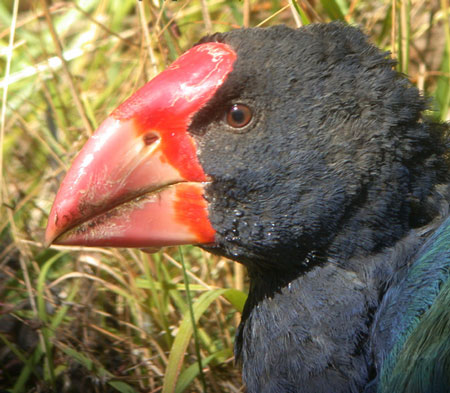 Literally on the other side of the world, we visit the islands of New Zealand one of the most remote places on earth that during 8o million years of isolation has evolved a fascinating and unique fauna. This itinerary is designed to find over fifty or so of the world’s rarest endemic bird species, including the emblematic Kiwi, and amidst some of the most magnificent and breathtaking scenery imaginable we search the North, South and Stewart Islands. Located in the Southern Ocean New Zealand is also rich in oceanic species of birds and mammals and our itinerary includes pelagic tours at many key locations. In fact the waters here are home to one of the finest concentrations of pelagic birds and cetaceans in the world, and our superb boat trips will allow us to view albatrosses, penguins, and numerous petrels, shearwaters and prions. Amongst scenery that includes glaciers, rushing rivers, hot geysers and volcanic springs we will be led by our local guide who has many years experience of the birdlife of this beautiful country. Join us where the food is legendary, the accommodation varied and interesting, and the locals are the friendliest people on the planet. Please note that we offer one of these most complete birdwatching itineraries to New Zealand giving you more chances than any other compnay to connect with its endemic and special species!
Literally on the other side of the world, we visit the islands of New Zealand one of the most remote places on earth that during 8o million years of isolation has evolved a fascinating and unique fauna. This itinerary is designed to find over fifty or so of the world’s rarest endemic bird species, including the emblematic Kiwi, and amidst some of the most magnificent and breathtaking scenery imaginable we search the North, South and Stewart Islands. Located in the Southern Ocean New Zealand is also rich in oceanic species of birds and mammals and our itinerary includes pelagic tours at many key locations. In fact the waters here are home to one of the finest concentrations of pelagic birds and cetaceans in the world, and our superb boat trips will allow us to view albatrosses, penguins, and numerous petrels, shearwaters and prions. Amongst scenery that includes glaciers, rushing rivers, hot geysers and volcanic springs we will be led by our local guide who has many years experience of the birdlife of this beautiful country. Join us where the food is legendary, the accommodation varied and interesting, and the locals are the friendliest people on the planet. Please note that we offer one of these most complete birdwatching itineraries to New Zealand giving you more chances than any other compnay to connect with its endemic and special species!
|
|
Day 1 Arrive Auckland New Zealand - 30th Jan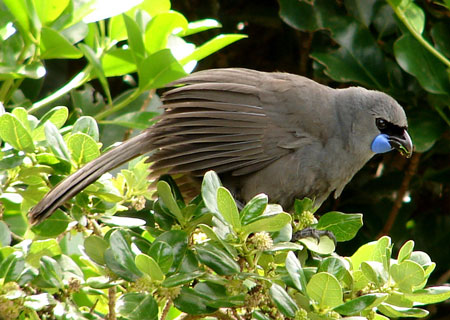
We plan to arrive on this day and rest prior to the start of our tour tomorrow the 30th Jan. If you are starting your journey from the UK you will probably need to depart UK on the 28th or 29th to arrive on the 30th. Please check carefully the flight timings.
Night Auckland Rose Park Hotel
Day 2 Arrive - Trounson - 31st Jan
Auckland to Trounson (4 hours driving). Pick-up at accommodation in Auckland (as Auckland is a large congested city, we suggest people stay at the Auckland Rose Park Hotel). One of our first stops will be a forested area near to central Auckland where we will get an introduction to some of New Zealand’s forest species, such as North Island Tomtit, New Zealand Pigeon, Grey Fantail, and Grey Gerygone (grey warbler). We will then head to a spot on the rugged west coast to one of New Zealand’s three mainland Australasian Gannet colonies. Superb views and photographic opportunities exist, and we will also look for other common coastal species such as Pied Cormorant, Red-billed Gull, and White-fronted Tern. We will then head back across to the east coast via an area renowned as the stronghold of Laughing Kookaburra (introduced from Australia), to several wetland areas to look for New Zealand Scaup, New Zealand Grebe (dabchick), Grey Teal, Australasian Shoveler, Pacific Black Duck (grey duck), Paradise Shelduck, and other waterbirds. We will also spend time looking for Buff-banded Rail (banded rail) in likely mangrove habitat. Continuing northwards we are heading for Trounson where we will check into our accommodation and rest up for our post-dinner walk to look for Northern Brown Kiwi. We will certainly hear, and hope to see Morepork as well.
Night Trounson – L,D
Day 3 Trounson to Warkworth - 1st Feb
This morning we will head east to a small eastuary which is one of the last places to see the critically endangered Fairy Tern (currently there are only about 30 - 40 birds), as well as other shorebirds including New Zealand Plover (NZ Dotterel), Variable Oystercatcher, Black-winged Stilt (Pied Stilt), and Arctic migrants such as Bar-tailed Godwit and Red Knot. We may check several estuaries further south which could also hold Fairy Tern, while other sites nearby may produce New Zealand Pipit and Australasian Little Grebe before heading back to our accommodation in Warkworth where we will spend the next two nights. B,L,D
Day 4 Warkworth to Hauraki Gulf Pelagic - 2nd Feb
Today we will spend our time out in the beautiful waters of the Hauraki Gulf. Leaving from Sandspit we will head out towards Little Barrier Island where we will 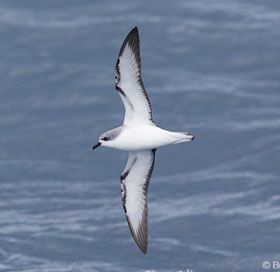 start (chumming) to see what we can attract in close to the boat. The main focus of our pelagic will be to locate some of the seabirds most easily seen in the northern part of New Zealand such as the New Zealand Storm-Petrel discovered by our guides in 2003. Other birds we hope to encounter are Black and Cook's Petrel, Fluttering, Flesh-footed and Little Shearwaters, White-faced Storm-Petrel, and depending on weather conditions we may head out to an Australian Gannet colony which also holds Grey Ternlet during late summer. We will also keep a look out for marine mammals as this is an excellent area to see Bryde's Whale, Common and Bottle-nosed Dolphins and occasionally Killer Whale (Orca). As the hauraki Gulf is enclosed even in poor weather we should be able to get out and explore at least some of the areas.
start (chumming) to see what we can attract in close to the boat. The main focus of our pelagic will be to locate some of the seabirds most easily seen in the northern part of New Zealand such as the New Zealand Storm-Petrel discovered by our guides in 2003. Other birds we hope to encounter are Black and Cook's Petrel, Fluttering, Flesh-footed and Little Shearwaters, White-faced Storm-Petrel, and depending on weather conditions we may head out to an Australian Gannet colony which also holds Grey Ternlet during late summer. We will also keep a look out for marine mammals as this is an excellent area to see Bryde's Whale, Common and Bottle-nosed Dolphins and occasionally Killer Whale (Orca). As the hauraki Gulf is enclosed even in poor weather we should be able to get out and explore at least some of the areas.
Night in Warkworth. B,L,D
Day 5 Tiritiri Matangi Island - 3rd Feb
Today we will head to one of New Zealands most incredible birding locations Tiritiri Matangi Island. The island is a fantastic conservation project as we will set off on a short ferry ride to the island where we hope to see Fluttering Shearwater, White-fronted Tern and possibly Arctic Skua (Parasitic Jaeger). On arrival we will be met and given information about the island by the department of conservation staff. New Zealand has a large number of enthusiastic and passionate conservation volunteers and this island is an example of what they can achieve. Volunteers, including school groups, have transformed this island from a grassy, treeless paddock used to graze sheep to a predator free forest now home to some of New Zealand’s rarest birds. Over 200,000 native plants have been planted to create a variety of habitats. We will concentrate our efforts on the endemics and birds we will look for include the North Island Saddleback, Stitchbird, Whitehead, Kokako, Takahe (a flightless rail), Brown Teal, Red-crowned Parrakeet, plus other more common species such as Tui, Bellbird, Grey Fantail, Grey Gerygone and North Island Robin. We will spend time at a small pond waiting for Spotless Crake to appear and then after dinner we will go in search of Morepork and hopefully Little Spotted Kiwi. The Tuatara and endemic lizard related to the dinosaurs also lives here and we will look for these as well as possible bumping into a Little Penguin. Tonight will be slightly unusual as we will have accommodation in a bunkhouse the only place available on the island. Although rustic and with shared rooms only it will be a great experience and not to be missed.
Night Tiritiri Matangi Island. B,L,D
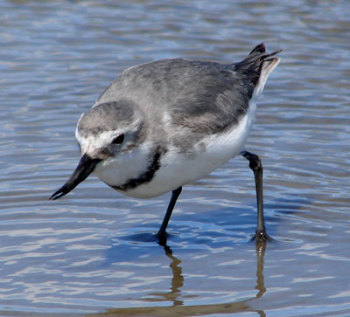 Day 6 Tiritiri Matangi Island - Miranda - 4th Feb
Day 6 Tiritiri Matangi Island - Miranda - 4th Feb
We start the day with the magnificent dawn chorus. Sir Joseph Banks, when travelling with Captain Cook, described the dawn chorus in New Zealand as the most melodic he had ever heard. By mid morning we will leave the island on the short ferry crossing and then continue our journey to Miranda, New Zealands premier shorebird site in the Firth of Thames. Miranda Shore bird Centre is a renowned location for migratory waders and the summer residence for many of New Zealand’s only endemic wader the Wrybill. Wrybills are unique in the bird world as they are the only species that has a beak that curves sideways. We need to work with the tides and will spend our time in different area searching for an assortment of wading birds. The endemic Black-billed Gull, which breeds in southern streams, may also be present and amongst the migratory waders present we may find New Zealand Plover, Eastern Curlew, Bar-tailed Godwit, Sharp-tailed Sandpiper, Red-necked Stint, Terek Sandpiper, Red Knot and other species such as South Island Pied Oystercatcher, Pied stilt and Banded Dotterel. .
Night Miranda. B,L,D
Day 7 Miranda - Whitianga - 5th Feb 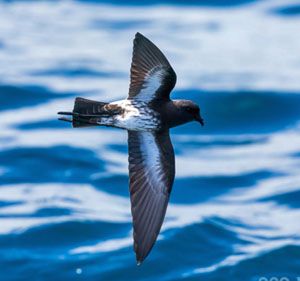 For the early risers we will have another look for waders around Miranda, before we head across the east side of the Coromandel Peninsula to Whitianga. This afternoon will be spent on another great pelagic specifically to target Pycroft's Petrel which breeds on nearby islands.We also get a second shot at some of the northern breeding seabirds including Common Diving-Petrel, Buller's, Flesh-footed and Little Shearwaters, Fairy Prion, Grey-faced, Cook's and Black Petrel, White-faced Storm-Petrel and maybe an albatross or two. Whitianga was were our guides made the first rediscovery of the rare New Zealand Storm-Petrel back in 2003 so who knows what could turn up. We aim to be back in port in the evening so that we get a chance to see Pycroft's Petrel's rafting up before they head for their breeding colonies late in the evening.
For the early risers we will have another look for waders around Miranda, before we head across the east side of the Coromandel Peninsula to Whitianga. This afternoon will be spent on another great pelagic specifically to target Pycroft's Petrel which breeds on nearby islands.We also get a second shot at some of the northern breeding seabirds including Common Diving-Petrel, Buller's, Flesh-footed and Little Shearwaters, Fairy Prion, Grey-faced, Cook's and Black Petrel, White-faced Storm-Petrel and maybe an albatross or two. Whitianga was were our guides made the first rediscovery of the rare New Zealand Storm-Petrel back in 2003 so who knows what could turn up. We aim to be back in port in the evening so that we get a chance to see Pycroft's Petrel's rafting up before they head for their breeding colonies late in the evening.
Night Whitianga. B,L,D
Day 8 Whitianga - Turangi - 6th Feb
This morning we head back across the peninsula making several stops along the way to look for Australasian Bittern and a variety of waterfowl. However our main focus of today is to visit the Pureora Forest Park to the west of Lake Taupo. The Pureora Forest is often referred to as the ‘dinosaur forest’ because it is dominated by ancient conifers in the Podocarp family. Podocarps were the dominant trees in Gondwana 100 million years ago and are still dominant in some of New Zealand’s rainforest and no more so than at Pureora. Some of the species we will be looking for include North Island Fernbird, North Island Kaka, Yellow-crowned Parakeet, New Zealand Pigeon, Long-tailed Koel, Shining Bronze-Cuckoo, Tui, Bellbird, Whitehead, Rifleman, Silvereye and Grey Warbler. We will also keep an eye out for New Zealand Falcon and New Zealand Pipit as both are in the area.
Night Turangi. B,L,D
Day 9 Turangi - Napier - 7th Feb 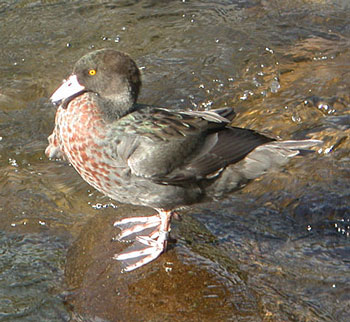 This morning we will search the swift flowing rivers around Turangi for the most extraordinary of water birds - the Blue Duck. These birds have declined markedly and there are now a few locations where they may be found without a major hike. Hopefully we will be able to spend time watching these remarkable birds backdropped by three of the central north island volcanoes Ruapehu, Ngaruhoe, and Tongariro. In the afternoon we will head east to a forested reserve between Taupo and Napier. Because of the control of introduced mammals, the wildlife is now flourishing and we are likely to see more here than anywhere else on the north island. North Island Robin and Kokako have been reintroduced as well as North Island Brown Kiwi. We will spend time searching for New Zealand Pigeon, Whitehead, Tomtit, Tui, Bellbird and Rifleman, as well as New Zealand Falcon and New Zealand Fernbird. After this we will head down to Napier and if time permits check an estuary for waterbirds along the way.
This morning we will search the swift flowing rivers around Turangi for the most extraordinary of water birds - the Blue Duck. These birds have declined markedly and there are now a few locations where they may be found without a major hike. Hopefully we will be able to spend time watching these remarkable birds backdropped by three of the central north island volcanoes Ruapehu, Ngaruhoe, and Tongariro. In the afternoon we will head east to a forested reserve between Taupo and Napier. Because of the control of introduced mammals, the wildlife is now flourishing and we are likely to see more here than anywhere else on the north island. North Island Robin and Kokako have been reintroduced as well as North Island Brown Kiwi. We will spend time searching for New Zealand Pigeon, Whitehead, Tomtit, Tui, Bellbird and Rifleman, as well as New Zealand Falcon and New Zealand Fernbird. After this we will head down to Napier and if time permits check an estuary for waterbirds along the way.
Night Napier or nearby Havelock North. B,L,D
Day 10 Napier - Foxton - 8th Feb
This morning we will try and catch with any species that may be missing from our list or visit nearby locations for Bittern, waterbirds and shorebirds. We will then head off towards the Manawatu area and Manawatu Estuary for more shorebirds and Wrybill. Along the way we may see two introduced species from Australia the Eastern Rosella and Sulphur-crested Cockatoo. We will be staying the night near Manawatu Estuary one of the best sites in New Zealand for shorebird watching. The shorebirds here are often very confiding and we can get great looks at Red Knot, Bar-tailed Godwit, Variable Oystercatcher, and hopefully Wrybill. Depending on the tide and what around at the time we may get to see Pacific Golden Plover, Sharp-tailed Sandpiper, Red-necked Stint, or Curlew Sandpiper.
Night Foxton. B,L,D
Day 11 Foxton - Picton - 9th Feb
We may get time to check the estuary again before we head south along the scenic Kapiti coast towards Wellington, 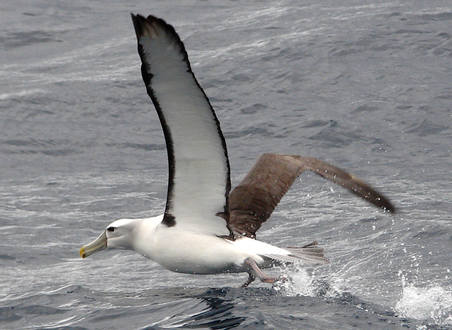 stopping occasionally to look for Black-fronted Dotterel. The inter island ferry leaves Wellington and heads across the Cook Strait to South Island. The 3 hour trip gives us an excellent opportunity to look for seabirds and we can expect Spotted Shag, Fairy Prion, Fluttering Shearwater, and White-fronted Tern. Depending on weather conditions and prevailing winds we could also see New Zealand Wandering, White-capped and Salvin's Albatrosses, Northern Giant Petrel, Westland Petrel, and Sooty Shearwater. Near to the entrance to Marlborough Sounds and possibly in calm patches of water we could see Little Penguin and Common Diving-Petrel, and there is always the chance for something more unusual or maybe a pod of dolphins. Once we dock in Picton we have less than 5 minutes to drive to our accommodation.
stopping occasionally to look for Black-fronted Dotterel. The inter island ferry leaves Wellington and heads across the Cook Strait to South Island. The 3 hour trip gives us an excellent opportunity to look for seabirds and we can expect Spotted Shag, Fairy Prion, Fluttering Shearwater, and White-fronted Tern. Depending on weather conditions and prevailing winds we could also see New Zealand Wandering, White-capped and Salvin's Albatrosses, Northern Giant Petrel, Westland Petrel, and Sooty Shearwater. Near to the entrance to Marlborough Sounds and possibly in calm patches of water we could see Little Penguin and Common Diving-Petrel, and there is always the chance for something more unusual or maybe a pod of dolphins. Once we dock in Picton we have less than 5 minutes to drive to our accommodation.
Night Picton. B,L,D
Day 12 Picton - Kaikoura - 10th Feb
A morning cruise on a small boat takes us back up Queen Charlotte Sound to Motuara Island, the second of the three predator free island sanctuaries we visit during the tour. Here we see the South island sub-species of Saddleback and Robin both of which are very tame. Bellbirds, Silvereyes, and Pied Fantails are common and NZ Falcons are 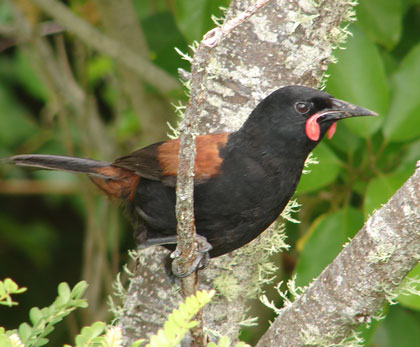 sometimes seen and possibly Orange-fronted Parakeet. Back on the water we search for the rare locally endemic King Shag (it is confined to the Marlborough Sounds with a population of just 650 birds), Pied, Little and Spotted Shags, Australasian Gannet, Fluttering Shearwaters, Blue Penguin, Caspian Tern and White-faced Heron. We could also be lucky with either Hector's or Dusky Dolphins. After returning to Picton we drive south through the Marlborough wine country, internationally renowned for its superb sauvignon blanc wines, to the east coast town of Kaikoura. En route we will stop at a wetland to look for Australasian Shoveler and Grey Ducks, Paradise Shelduck, Grey Teal and New Zealand Scaup, Variable Oystercatcher, Wandering Tattler, Pied and Little Shag, Pacific Reef Heron and White-fronted Tern. With a backdrop of steep mountains and sea that plummets into a deep ocean trough, Kaikoura is not only spectacular to look at it is also a perfect habitat for pelagic animals. Sperm Whales are resident, Humpback Whales are seasonal visitors, Dusky Dolphins are abundant, the tiny rare Hector’s Dolphin is frequently seen and there is a Fur Seal colony close to the town. Pelagic birds including several Albatross species and Giant Petrels are often seen from the shore. Hutton’s Shearwaters breed near the tops of the 2500m mountain range behind the town. Not surprisingly Kaikoura’s economy is based on whale watching, swimming with dolphins and Albatross viewing as well as commercial diving for crayfish and paua (abalone). Throughout our journey we will see species introduced from Europe including Cirl Bunting, Chaffinch, Yellowhammer, Greenfinch, European Goldfinch, Redpoll, Blackbird, Song Thrush, House Sparrow, Dunnock and possibly Little Owl.
sometimes seen and possibly Orange-fronted Parakeet. Back on the water we search for the rare locally endemic King Shag (it is confined to the Marlborough Sounds with a population of just 650 birds), Pied, Little and Spotted Shags, Australasian Gannet, Fluttering Shearwaters, Blue Penguin, Caspian Tern and White-faced Heron. We could also be lucky with either Hector's or Dusky Dolphins. After returning to Picton we drive south through the Marlborough wine country, internationally renowned for its superb sauvignon blanc wines, to the east coast town of Kaikoura. En route we will stop at a wetland to look for Australasian Shoveler and Grey Ducks, Paradise Shelduck, Grey Teal and New Zealand Scaup, Variable Oystercatcher, Wandering Tattler, Pied and Little Shag, Pacific Reef Heron and White-fronted Tern. With a backdrop of steep mountains and sea that plummets into a deep ocean trough, Kaikoura is not only spectacular to look at it is also a perfect habitat for pelagic animals. Sperm Whales are resident, Humpback Whales are seasonal visitors, Dusky Dolphins are abundant, the tiny rare Hector’s Dolphin is frequently seen and there is a Fur Seal colony close to the town. Pelagic birds including several Albatross species and Giant Petrels are often seen from the shore. Hutton’s Shearwaters breed near the tops of the 2500m mountain range behind the town. Not surprisingly Kaikoura’s economy is based on whale watching, swimming with dolphins and Albatross viewing as well as commercial diving for crayfish and paua (abalone). Throughout our journey we will see species introduced from Europe including Cirl Bunting, Chaffinch, Yellowhammer, Greenfinch, European Goldfinch, Redpoll, Blackbird, Song Thrush, House Sparrow, Dunnock and possibly Little Owl.
Overnight in Kaikoura. B,L,D
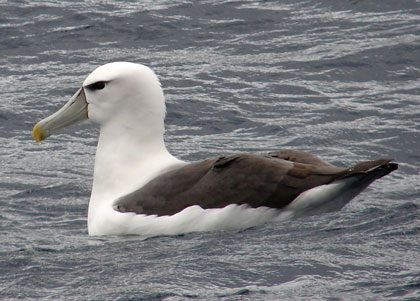 Day 13 Kaikoura Pelagic - 11th Feb
Day 13 Kaikoura Pelagic - 11th Feb
Early morning out on the ocean from Kaikoura is the best possible way to start the day. Because conditions are so perfect for pelagic birds we don’t need to travel far, or for too long, to see a lot of species. In fact the waters off Kaikoura hold an incredible array of pelagic birds, with over 40 species having been recorded. Possibilities include New Zealand Wandering Albatross (Antipodean, Snowy and 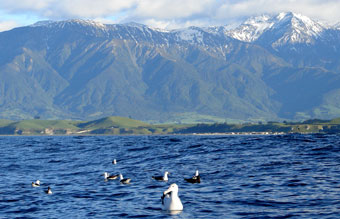 Gibson’s), Northern and Southern Royal Albatross, White-capped, Salvins, Buller’s, and Black-browed Albatross, Southern and Northern Giant Petrel, Westland, White-chinned and Common Diving Petrel, Hutton’s and Buller’s Shearwaters and the abundant Cape Pigeon. We also have chances for dolphins and even Sperm Whale. The afternoon today will be at leisure with opportunities for a variety of activities such as an afternoon pelagic, whale watching, swimming with dolphins or simple relaxing and enjoying the breathtaking beauty of this fabulous area. Please not our planned itinerary is for a relaxed afternoon and any additional activities are at your own expense.
Gibson’s), Northern and Southern Royal Albatross, White-capped, Salvins, Buller’s, and Black-browed Albatross, Southern and Northern Giant Petrel, Westland, White-chinned and Common Diving Petrel, Hutton’s and Buller’s Shearwaters and the abundant Cape Pigeon. We also have chances for dolphins and even Sperm Whale. The afternoon today will be at leisure with opportunities for a variety of activities such as an afternoon pelagic, whale watching, swimming with dolphins or simple relaxing and enjoying the breathtaking beauty of this fabulous area. Please not our planned itinerary is for a relaxed afternoon and any additional activities are at your own expense.
Night Kaikoura. B,L,D
Day 14 Kaikoura - Arthur's Pass - 12th Feb
Today we will head deep into the Southern Alps and through to Arthur's Pass. As we pass through this exceptionally scenic area we will be on the look out for our target bird of the day the Kea, which we should be able to find near Arthur's Pass itself. Also along the way we will stop at several rivers which are the breeding sites for the beautiful Black-fronted Tern. We should also get a chance to catch up with several South Island forest species such as New Zealand Brown Creeper, Yellow-fronted Parakeet and South Island Robin, before checking into our accommodation near Arthur's Pass. After dinner we will venture out to listen for Great Spotted Kiwi. If we hear we will consider ourselves lucky as seeing this species is almost impossible.
Night Arthur's Pass. B,L,D
Day 15 Arthur's Pass - Franz Joseph - 13th Feb
Today we will head west out over the pass and onto the west coast. We have chances again to check several areas of forest for New Zealand Brown Creeper, New Zealand Fernbird and Weka, as well as great opportunities to take photographs and even see another Kea. As we near our destination we can head into the glacial valley and enjoy views of the Franz Joseph Glacier, while in the nearby coastal lagoons we can also go in search of Royal Spoonbill, Sacred Kingfisher and Great Egret. We hope to get to our accommodation by late afternoon in time for a rest before our evening excursion. Our main focus tonight is to see the Rowi or Okarito Brown Kiwi, a relatively new split from the South Island Brown Kiwi, and the rarest of all kiwis with an estimated 400 birds only. We also have chances for Morepork but the kiwi will be our main focus.
Overnight in Franz Joseph. B,L,D
Day 16 Franz Joseph - Wanaka - 14th Feb
We continue down the West Coast towards Haast making a few stops at lakes and coastal areas looking for Great Crested Grebes, possibly some late Fiordland Crested 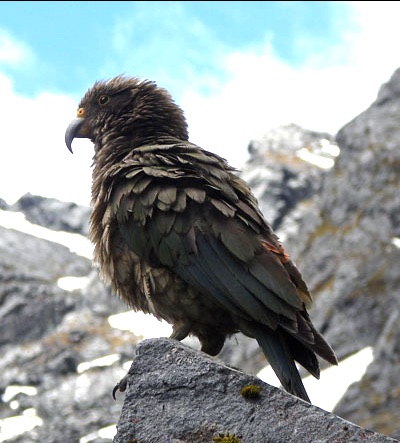 Penguins and Keas, which are alpine parrots some of whom haven’t read the books that say they are only found in alpine areas. The vegetation changes dramatically after we cross the divide due to the rain shadow from the mountains and we are soon in tussock grassland. This is a land of lakes, some natural and others created or enhanced by man for hydro-electric power generation. The huge braided rivers here bring the melt water down from the mountains. A visit to Haast Pass gives a chance for several forest species such as Rifleman, South Island Tomtit, Yellow-fronted Parakeet and Long-tailed Koel. This is also a good site for New Zealand Kaka, and in the past the endangered Yellowhead. More recently the latter species has been very hard to find with the population struggling to hold its own against the introduced predators. We will then drive an hour away to the beautiful lake side town of Wanaka.
Penguins and Keas, which are alpine parrots some of whom haven’t read the books that say they are only found in alpine areas. The vegetation changes dramatically after we cross the divide due to the rain shadow from the mountains and we are soon in tussock grassland. This is a land of lakes, some natural and others created or enhanced by man for hydro-electric power generation. The huge braided rivers here bring the melt water down from the mountains. A visit to Haast Pass gives a chance for several forest species such as Rifleman, South Island Tomtit, Yellow-fronted Parakeet and Long-tailed Koel. This is also a good site for New Zealand Kaka, and in the past the endangered Yellowhead. More recently the latter species has been very hard to find with the population struggling to hold its own against the introduced predators. We will then drive an hour away to the beautiful lake side town of Wanaka.
Night Wanaka. B,L,D
Day 17 Wanaka - Te Anau - 15th Feb
After we have found the Kaki (no guarantees) we travel across the vast expanse of the tussock 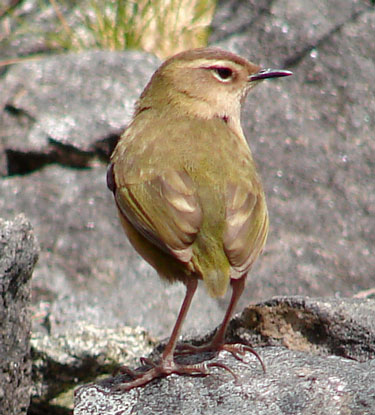 grasslands through farmland and hills to Te Anau a pretty town on a beautiful deep lake. We stay here for 2 nights and have time to relax and catch our breath. The view of Mitre peak in Milford Sound is one of the most photographed scenes in New Zealand, for those lucky enough to see it as Milford gets 3 metres of rain a year so the odds of a clear day aren’t good. Though wonderful to see the spectacular scenery the main focus of today will be stop in Alpine habitat to look for Rock Wren (South Island Wren) one of the worlds most primitive birds and more related to the commoner Rifleman. Todays birding will be dictated by the weather and our success with Rock Wren which is not possible anywhere else. If time allows we may head through to Milford Sound and view it from the shore.
grasslands through farmland and hills to Te Anau a pretty town on a beautiful deep lake. We stay here for 2 nights and have time to relax and catch our breath. The view of Mitre peak in Milford Sound is one of the most photographed scenes in New Zealand, for those lucky enough to see it as Milford gets 3 metres of rain a year so the odds of a clear day aren’t good. Though wonderful to see the spectacular scenery the main focus of today will be stop in Alpine habitat to look for Rock Wren (South Island Wren) one of the worlds most primitive birds and more related to the commoner Rifleman. Todays birding will be dictated by the weather and our success with Rock Wren which is not possible anywhere else. If time allows we may head through to Milford Sound and view it from the shore.
Night Te Anau. B,L,D
Day 18 Te Anau - Stewart Island - 16th Feb
Our destination today is the third largest island in New Zealand, Rakiura or Stewart Island. We will drive to Bluff, the most southerly mainland town, to catch the ferry across to Oban, the only town on the island. There are very few roads on the island so we have to catch water taxis and walk to get around. Only a tiny portion of the island is inhabited and most of the rest is national park and clothed in primary native forest. It was the last stronghold of many native species, including the critically endangered flightless parrot the Kakapo, but even here introduced predators caused extinctions. Kakas, Kereru (Pigeons), Bellbirds and Tuis are common around the town and a trip to predator free Ulva Island will provide us the opportunity to see Red and Yellow-crowned Parakeets, Weka, Saddleback, Mohua, very tame Robins, Yellowhead and there is a slight chance of seeing Kiwi. This evening however will be an unforgetable experience as we will go on a short boat ride to see our last Kiwi species, the Southern Brown feeding on a beach.
Night Oban. B,L,D
Day 19 Stewart Island Pelagic - 17th Feb
Today we plan to do a pelagic, but this is one part of the world we do not want bad weather. We will set out to see the conditions and if all is well we could be in for an epic day. Our boat should take us down the east coast of Rakiura to the Southern Ocean at South Cape, where it could be rough so we will need to be prepared but the rewards will make it a very special day. The birds won’t all be new but we are sure to see many species not seen at Kaikoura. Possibilities include most of the Albatross species including the super Southern Royal Albatross, both Northern and Southern Giant Petrels, Sooty Shearwater, Brown Skua, Mottled Petrel, Cook's Petrel, Broad-billed and Fairy Prion, Yellow-eyed, Fiordland Crested and Blue Penguins and Antarctic Terns. Commoner species include Cape Petrel, Sooty Shearwater, Spotted and Stewart Island Shag, Brown Skua and Red-billed Gull. As with all pelagic trips it is the unpredictable sightings that make the experience so exciting. Depending on our success with Southern Brown Kiwi last night we may have the opportunity to go out again after dark as a back up.
Night Oban. B,L,D
Day 20 Stewart Island - Oamaru - 18th - Feb 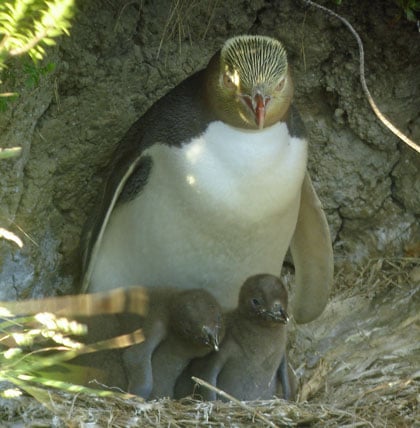 Today we will catch the ferry back across to Bluff looking for more seabirds along the way. We will then head northwards toward Oamaru along the very scenic Catlins Coast. making a few stops along this beautiful coastline we wiil look for the endemic Hooker's Sealion, and possible a few forest birds, but our main aim is to get to Oamura in the late afternoon and head to a beach where we can watch Yellow-eyed Penguins coming ashore. Depending on the winds we may also get to see a few seabirds passing by.
Today we will catch the ferry back across to Bluff looking for more seabirds along the way. We will then head northwards toward Oamaru along the very scenic Catlins Coast. making a few stops along this beautiful coastline we wiil look for the endemic Hooker's Sealion, and possible a few forest birds, but our main aim is to get to Oamura in the late afternoon and head to a beach where we can watch Yellow-eyed Penguins coming ashore. Depending on the winds we may also get to see a few seabirds passing by.
Night Oamura. B,L,D
Day 21 Oamura - Omarama - 19th Feb
Today we head inland to one of the driest parts of South Island the Mackenzie Basin. With stunning glacial lakes, mountains, and red tussocks, the scenery and birds will be amazing. The focus of today will be the rarest bird in New Zealand the Kaki or Black Stilt. It breeds along the rivers in this area and we will spend some time looking for this elusive bird. Like so many rare New Zealand birds it owes its survival to micro-management by conservation authorities, who operate captive breeding facilities, and private conservation groups. With a total population of just 100 birds we will need some luck , but who knows we may find them at our first stop or we may have to work hard to find one. We will also keep a look out for New zealand Falcons which are found in this area as well as Baillon's Crake, and if its a clear day we might get great views of New Zealands highest mountain - Mount Cook.
Night Omarama. B,L,D
Day 22 Omarama - Christchurch - End of Tour - 20th Feb
Today we will head northwards through agricultural country before hitting the coast and crossing a large number of braided rivers that flow from the Southern alps to the sea. Many of these rivers are good breeding sites for Wrybill and Black-fronted Terns, and we may make several stops here or at coastal lagoons before reaching Christchurch. We will end our tour at Christchurch international airport around 1pm, or we can drop you at your accommodation should you bee staying on for a few days. Please note not to book any international departing flight before 3.30pm today so as to allow you enough time. B
Leaders: Brent Stephenson and Steve & Gina if 7.
Airfare: £750.00 - £1200.00 (Approx) - UK / UK Zoothera tour prices explained
Group size: Maximum 8.
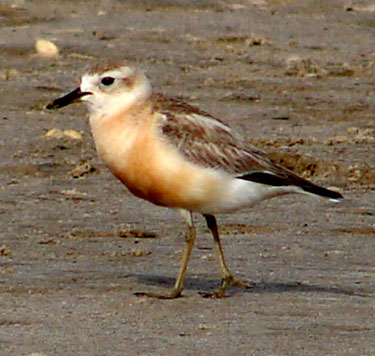 Included in cost: All accommodation, breakfasts (B), lunches (L), dinner (D) as indicated in itinerary, guiding, transport throughout, and tours such as pelagics, island visits, Milford Sound tour, Kiwi, Penguin and Albatross tours, ferries, boat charters, services of local guides and a copy of: Birds of New Zealand book, A Photographic Guide:
Included in cost: All accommodation, breakfasts (B), lunches (L), dinner (D) as indicated in itinerary, guiding, transport throughout, and tours such as pelagics, island visits, Milford Sound tour, Kiwi, Penguin and Albatross tours, ferries, boat charters, services of local guides and a copy of: Birds of New Zealand book, A Photographic Guide:
Not included: International airfare, insurance, drinks, tips, and items of a personal nature.
Accommodation: All accomodations are of a good standard and offer en-suite rooms., except 1 night on Tiritiri Island where accommodation is shared and is a wonderful experience.
Tour Code: This tour represents probably the most complete trip to New Zealand on the market. No one else offers 2 chances for Pycroft's Petrel, some do not even do a Hauraki Gulf pelagic, others do not look for Okarito Kiwi and many trips fail to see Rock Wren. We have the very best itinerary and local guides and logistics to make New Zealand a complete and wonderful experience. Our tour is pretty much a standard birding tour with regular birding walks along roads and well marked trails. Most days see us depart after breakfast and return just before dinner. On occasions we have optional night excursions for owls and kiwis. The weather is unpredictable and you need to allow for all weathers. It can rain heavy so be prepared for all eventualities.
Receive our e-newsletter: Join the Zoothera e-mailing list for up-to-date news on new tours, tour reports and special offers. Click Here to sign up
e-mail [email protected] to sign up.
Recommended Books, CD's and more from NHBS. Click on - Buy from NHBS - to go straight to website!
